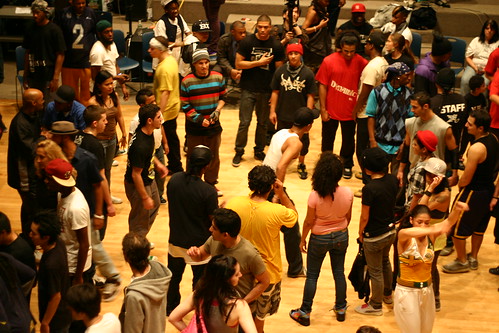Today at Quaker Meeting I was thinking about how the experience of any kind of performance is affected by the format that is received. A symphony listened to from the lawn in Central Park with thousands of other picnickers has little relationship to the same symphony heard from a video recording uploaded to YouTube. And yet, I and others who work in social media, are always trying to package various artistic and performative experiences into something that can be uploaded and shared on the internet.
Perhaps we are missing the point.
Someone said that jazz is best experienced in an intimate live setting, with a small audience in close proximity to the band. Even a small concert hall might be too big to full experience the ephemeral and minute interplay of the musicians. As a lindy hopper, I know that dancing to a live band in front of me has little relationship to dancing to their music track being played by a DJ. It's just a completely different experience.
Breaking / b-boying is another example of an artform that only roughly translates to a mass audience. The truest experience and expression of b-boying is the cypher, a tight circle of dancers trading sets and moves as a small crowd huddles around them watching. This is why stage productions with b-boying always seem kind of flat to me, and why it is so hard to translate that experience to flat video.
Quaker Meeting for Worship is another kind of experience that does not translate to a digital medium. It's the intimacy of being in a room with a dozen to at most 100 other worshippers, sitting in silence, that is so powerful and transformative. The closest digital version of this is the Quaker community in Second Life, which I have been moved by in the past, but still can not match the real life equivalent.
There are of course many, many experiences that resist digitization and mass media consumption: live theater, spoken word, performance art, sleight-of-hand magic, etc.
I do believe there is value in examining how digital technologies can expand the reach of the arts and the spirit, to new audiences around the world. But at some level, these experiences can not be competely digitized, packaged and sold. I need to remember what makes these transcendent experiences unique and special — the ineffable and intimate exchange that takes place among performers, and between performer and audience.
